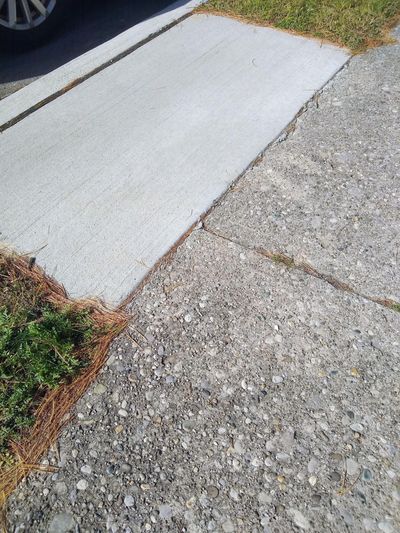Ask the Builder: How long can concrete last?

Q. Tim, I’m about to have a new concrete driveway installed, as well as some sidewalks. I asked the bidding contractors how long I might expect the concrete to last. The range given was from 20 to 30 years. That seems like a long time, but I thought it could last much longer. How long can concrete last in your opinion? What can be done to extend the useful life of concrete no matter if it’s flatwork, steps or foundation walls? – Tom B., Rockdale, Illinois
A. These are good questions, especially if you’ve ever had problems with concrete installed by a nonprofessional. If improperly installed, new concrete can crack, spall or fail in any number of other ways.
I’d like to share some experiences with you to give you an idea of what’s possible with concrete life expectancy. The first one involves railroads. I was a conductor on a local scenic train for two years, and I’ve always taken an interest in railroads and how they were built.
I started to notice the concrete abutments and bridge supports near my last home in Cincinnati years ago. One day I happened to see on one abutment a cast date in the concrete. It was 1919! The concrete looked to be in fantastic shape with no cracks, no spalling and nothing missing. It was dirty, of course, but otherwise looked almost new. I’ve since looked at other railroad bridge abutments and seen the same thing: old concrete in great shape.
I also used to take walks around the older suburb of Pleasant Ridge in Cincinnati. There were countless houses built upon slight rises from the street. Many had a set of concrete steps coated with stucco. These steps were in perfect condition, and most, no doubt, were installed in the early 1900s. Stuccoing steps is almost a lost art, by the way.
Just a month ago, I drove by the first house I rehabbed in Cincinnati. I did the job in fall of 1975. I had to install a set of concrete steps from the sidewalk up to the wooden steps leading to the house. The concrete steps look as good as the day I installed them 24 years ago notwithstanding many harsh winters and all the rock salt that was cast upon the treads for safety! They’ll probably last at least another 50 years.
While I was back in Cincinnati, I was walking to lunch to meet a friend in Hyde Park. I saw an old sidewalk that was crack-free next to some brand-new concrete with a broom finish. The old sidewalk had long since lost its top coating of sand and cement, and you could see many of the stones in the concrete. While it may not have looked great, it was still solid and useable. My guess is this sidewalk was installed long before 1950.
It’s important to realize that basic concrete has just four ingredients: sand, stones, Portland cement and water. The Portland cement is what holds together the sand and stones for years and years assuming you do lots of things right when you mix, pour, finish and cure it.
The more cement you add to your mix, the stronger the concrete is going to be. The minimum strength for exterior concrete that most experts recommend is a 4,000 pounds-per-square-inch compressive-strength blend. This is referred to as a six-bag mix per cubic yard of concrete. The standard bag of cement weighs 94 pounds, so you’re talking about having 564 pounds of Portland cement in each cubic yard.
Realize this is a minimum recommendation. Nothing is stopping you from putting in seven or even eight bags per cubic yard. I just checked at my local big box store, and the retail cost for a bag of cement is $13.75. Would you pay that small additional amount per cubic yard of your new concrete to extend its life by decades? Of course you would.
But making good concrete is not just a matter of adding more cement. You need to keep the amount of water used to mix concrete to a minimum. You do need to add enough water to get the mix to be plastic so you can work it, but not so fluid that it sloshes around inside the forms like watery vegetable soup.
Water is the lightest of the ingredients in the mix, and when you’re finishing the concrete, clear water can appear upon the surface as you wait for the concrete to get hard enough to finish. Pros call this bleed water.
Never trowel this bleed water into the surface of the concrete. It often evaporates, or you can pull it off using a rubber hose you drag across the wet concrete. Troweling the bleed water into the concrete dilutes the amount of cement paste near the surface. You don’t want to dilute the cement paste at the surface.
Corrosion-resistant reinforcing steel, concrete thickness, curing and a solid sub-grade under the new concrete are all very important, too. I’ve gone into great detail about these things in many past columns on my askthebuilder.com website. I urge you to read all of them.
Subscribe to Tim Carter’s free newsletter and listen to his new podcasts. Go to askthebuilder.com.